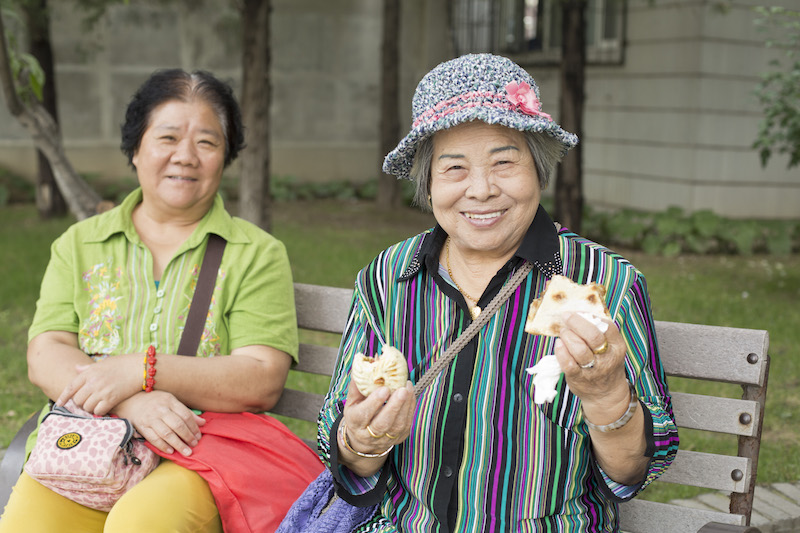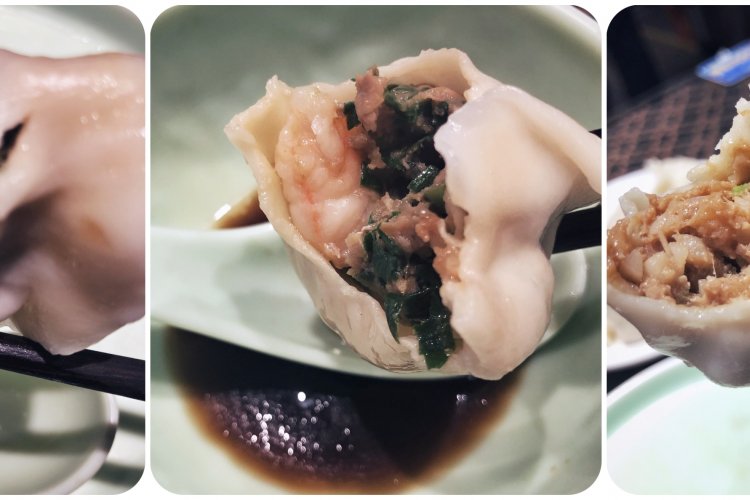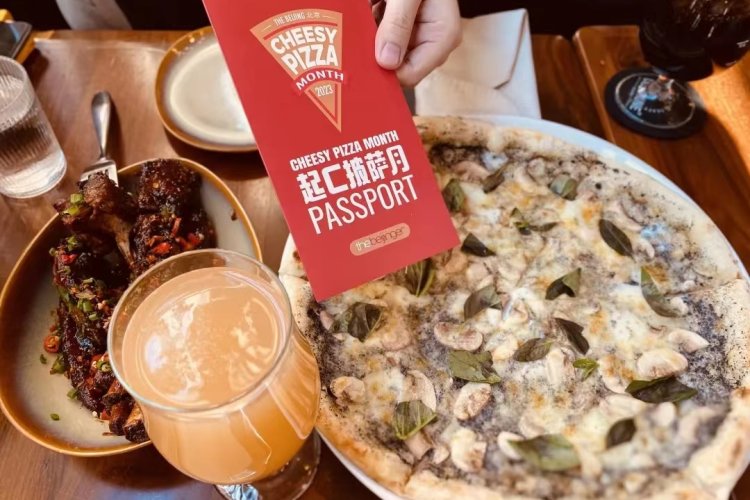When East Eats West: Testing New Fusion Dishes on Beijing’s Unsuspecting Elderly
Zhajiangmian, China’s much loved dish of thick noodles covered in a gloopy and near-black soybean sauce, pork, and sliced cucumber, is often used as a quintessential example of how Chinese food has spread, adapted, and been adopted by peripheral cultures. Of course, since the introduction of commercial aviation for transportation of foodstuffs, as well as the Internet for instant access to recipes, such original conglomerations of food occur much quicker than when those first Chinese sailors took their noodle know-how across the seas to Korea over one hundred years ago.
That being said, it’s seldom in Beijing to witness a foreigner open a successful Chinese restaurant, and why should we – there are plenty of Chinese cooks perfecting complex dishes that they have known since their childhood. Instead, what seems to be popular is cooperation and the invention of exciting new takes on Western food seen through a Chinese kaleidoscope, taking fragments of familiar tastes that toe line between the imaginations of both Chinese and Western diners.
With that on my mind, I hit up four restaurants who currently stock a particularly Western take on a Chinese staple or vice versa. Granted, it seems that Italian-Chinese food is becoming a cuisine of its own, with my test dishes including North Capital’s pizza dumplings, VSports’ Peking duck pizza, Baozza’s meat lover baozi, plus a Sichuan beef Pizza Hut creation. With the goods in hand I then headed to Tuanjiehu Park to try out some of Beijing’s current culinary amalgamations on the unsuspecting (elderly) public.
Going in, I feared a number of pitfalls: that strangers would never accept food off of a somewhat disheveled foreigner, everyone had already chile’d given that it was 12.05pm, and worst of all, that upon eating the food, I’d be met with any number of shades of disgust and accusations that I was trying to poison them.
Entering the park, it was obvious that there were going to be plenty of willing subjects, a few eyeing up my bags and boxes with looks of excitement usually reserved for when free meals are doled out to make up for a particularly delayed flight. But positive interest didn’t mean positive ingestion, and after a few failed attempts by the geriatric jungle gym, we found our first famished patron on a nearby bench.
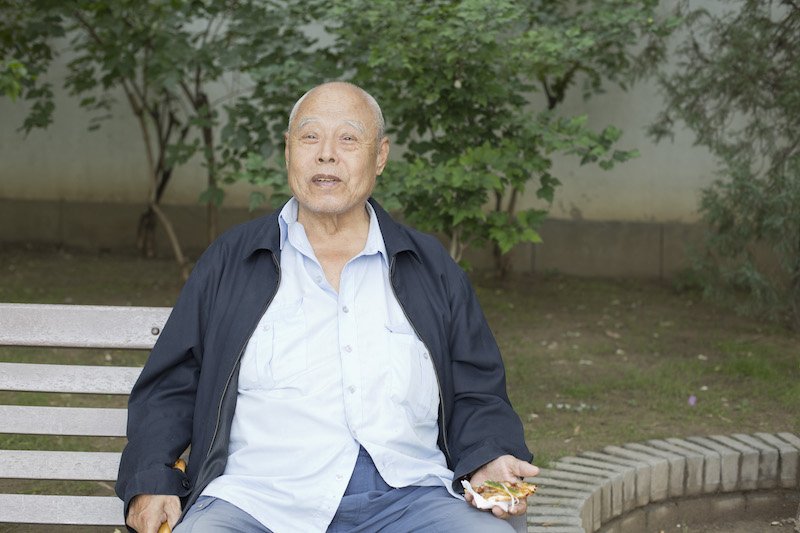
Wasting no time in grabbing a slice of Peking duck pizza, sprightly 84-year-old Mr Hua proudly proclaimed that he had “eaten all good foods before.” And while I was a little concerned that the base of the pizza might not be as forgiving on his teeth as time had apparently been on his looks, he tackled it like a pro. Just one singular complaint parsed his lips: not enough cheese.
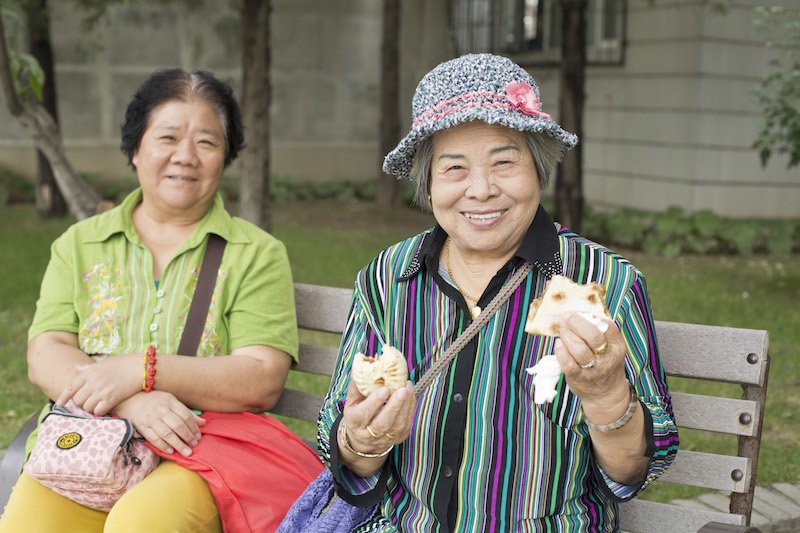
Next up was Ms Ying, who at 80 years old, said that she had first tasted pizza a number of years ago. Just like greedy Mr Hua before her, she didn’t hold back, seizing a baozi and folding two slices of pizza on top of each other, an ingenious method used to avoid mess and calling to mind a similar Beijing snack: roubing. Ms Ying added that she often eats pizza with her family, which came to be a common theme during my taste test, with almost all of the participants explaining that it was the younger generation of their family that had introduced such foods, later becoming customary to eat them together, usually as a treat.
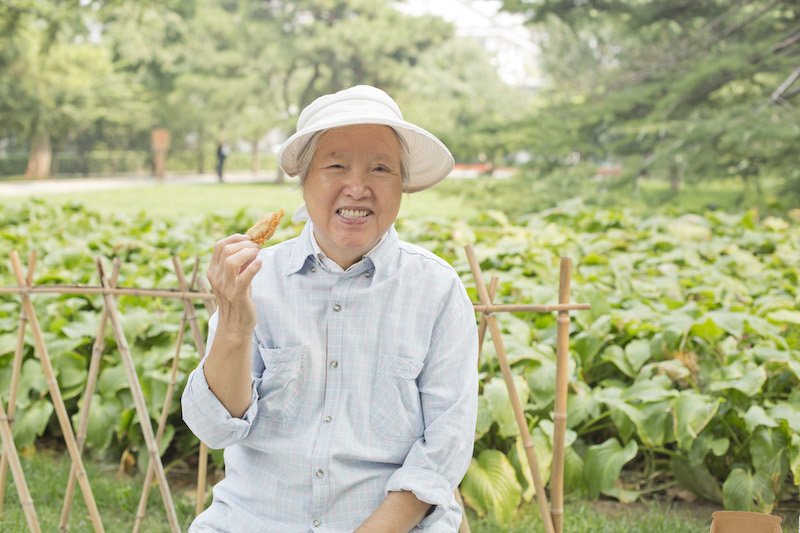
My penultimate contributor was 80-year-old Ms Yang. While she was slightly dubious about the prospect of a fried pizza dumpling – perhaps because she often fried her leftover dumplings to give them a little extra firmness the day after – Ms Yang didn’t hesitate to eat three in under a minute. She commented that although they were a little salty compared to her usual dose of dumplings, North Capital’s take were seasoned in a way that meant that they didn’t require a splash of customary soy or vinegar. “Jiaozi zenmeyang?” was met with a hearty, albeit muffled, “Ok!” on this one.
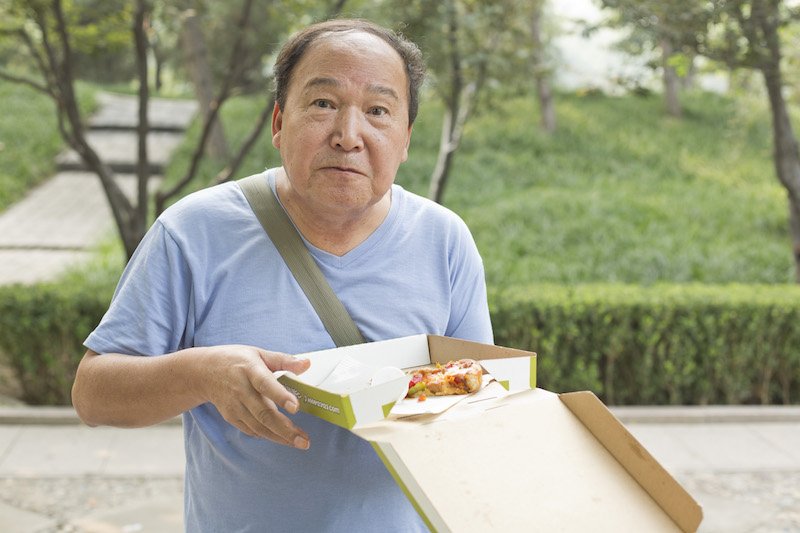
With half of my wares left, I needed a group to polish off the rest and I found just the motley crew: “Frank” and his troupe of dancing, badminton-playing buddies. Eager to practice his English, Frank told me that he has a long-time foreign friend that he meets with for language exchange, which is how he was first introduced to pizza. His children also treat him to food from all over the world, which he wouldn’t have tried otherwise because of the relatively higher prices. He finished by saying that he understood why locals and foreigners might be drawn to such foods as the price often signifies higher quality ingredients, and therefore less risk, when compared to the offerings found on the street.
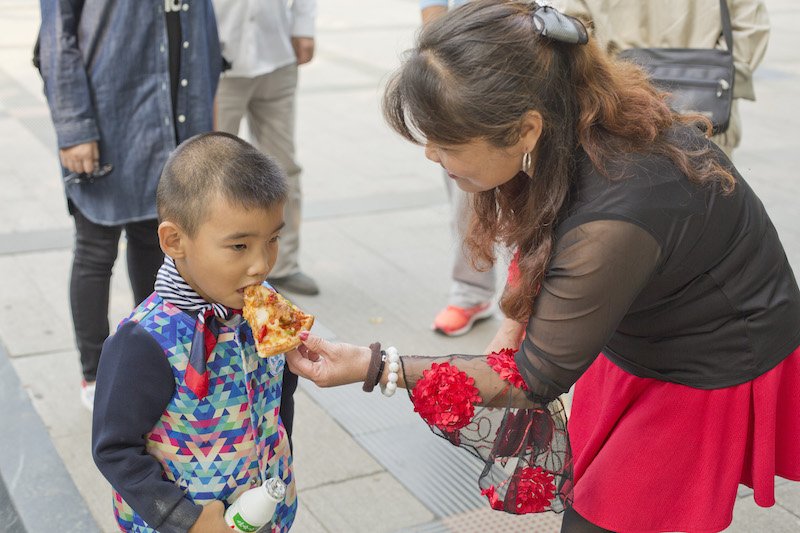
And there you have it: an innocent stroll around Tuanjiehu Park ended with no deaths, half a dozen full stomachs, and smiles all around. Given that this is Beijing, as well as the rapid proliferation of fast food across China over the past 20 years, including over 5,000 KFC outlets alone, it isn’t surprising that nearly all of my participants were familiar and willing to gobble down these Western takes on Chinese staples. As more foreigners make their way to China and the local middle class continues to grow – many now having a new penchant for the Western foods tried when traveling abroad – tastes are sure to steadily adapt and become increasingly more adventurous. Let’s hope that authentic Chinese foods continue their march abroad, as I can only pray that there are baozi waiting for me when I eventually return home.
More stories by this author here.
Email: tomarnstein@thebeijinger.com
WeChat: tenglish_
Instagram: @tenglish__
Photos: Uni You

